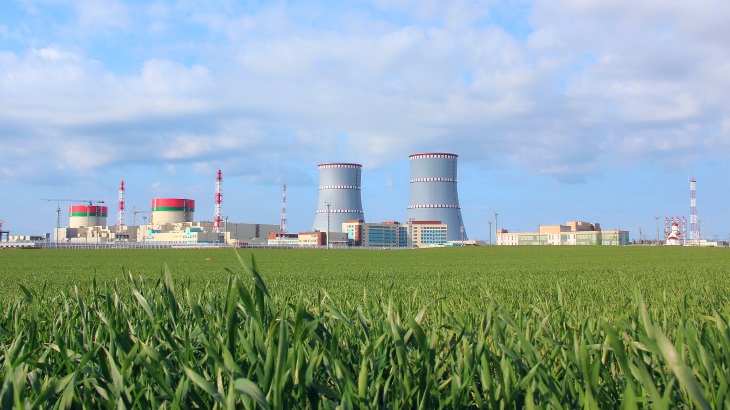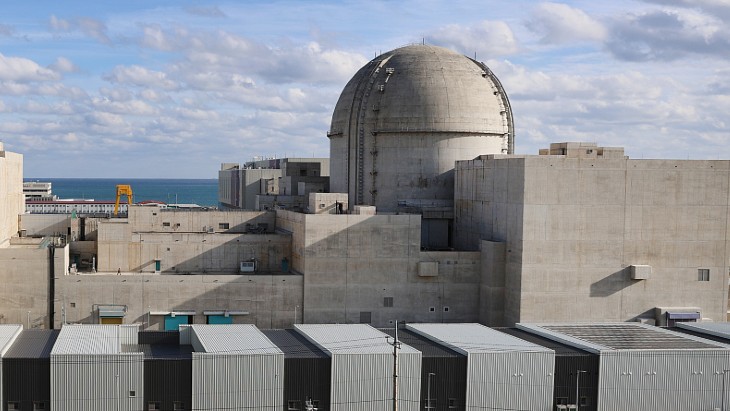Rosatom Director General Alexey Likhachev said: "The launch of the Belarusian nuclear power plant is a milestone for both Belarus and Rosatom. With the first kWh of electricity supplied to the grid Belarus has become a fully-fledged member of the nuclear energy club and joined over 30 countries operating a fleet of over 440 reactors, the largest source of low-carbon electricity on our planet which helps to prevent more than 2 billion of tonnes of carbon emissions every year. From Rosatom's perspective, it's the first VVER-1200 project successfully completed outside Russia."
Currently, three VVER-1200 units are in operation: two at the Novovoronezh NPP and one at the Leningrad NPP. The fourth - Leningrad II unit 2 - was connected to the grid for the first time on 22 October.
Andrey Petrov, general director of Rosenergoatom, Rosatom's operator subsidiary, said the AES-2006 project, on the basis of which the Belarusian NPP is being built, is "one of the most promising and in demand on the international nuclear market". Bangladesh, China, Finland, Hungary and Turkey are among its other VVER-1200 reactor customers, he added. "This fact, more eloquently than any words could, confirms the reliability and efficiency of Russian nuclear technologies," said Petrov, who is also first vice president for construction at Rosatom's engineering division ASE EC JSC.
Fully endorsed
The first fuel assembly with fresh nuclear fuel was loaded into the reactor core of unit 1 on 7 August. On 11 October, at the stage of physical start-up, the reactor was brought to the minimum controlled power level (less than 1% of the nominal capacity). Twelve days later, the State Enterprise Belarusian NPP and JSC ASE EC received permission from the Ministry of Emergency Situations of the Republic of Belarus to carry out work on the power start-up stage, which provides for a gradual increase in the power of the reactor from 1% to 50% of the nominal capacity, inclusion of the power unit in the unified power system of Belarus and carrying out dynamic tests at a reactor power level of 50%. This stage is scheduled for completion in early December, after which pilot operation will begin. Commissioning of the unit is scheduled for the first quarter of 2021.
The safety system of the twin-unit plant in Belarus has been "fully endorsed", Rosatom said, by the International Atomic Energy Agency, which concluded that the design parameters account for site-specific external hazards, such as earthquakes, floods and extreme weather, as well as human-induced events, and that measures have been taken to address challenges related to external events in light of lessons from the Fukushima Daiichi accident.
The IAEA has conducted seven of the missions it recommends for countries building their first nuclear power plant to the Belarus plant since 2012. In 2017-2018, Belarus voluntarily agreed to conduct EU nuclear safety 'stress-tests' and have the results peer-reviewed by the EU nuclear safety body, ENSREG, which has given the tests an 'overall positive' mark, Rosatom said.
An intergovernmental agreement between Russia and Belarus specifically on cooperation in the construction of a nuclear power plant in Belarus was signed in March 2011.
Mounting evidence
World Nuclear Association said Belarus had today joined the growing number of countries using nuclear energy to produce clean, reliable and cost-effective electricity. When both units are at full power, the 2382-MWe plant will avoid the emission of more than 18 million tonnes of carbon dioxide each year by replacing coal-fired generation, it noted.
Sama Bilbao y León, the association's director general, said: "Evidence is mounting that to keep on a sustainable and low-carbon energy path we need to rapidly accelerate the amount of new nuclear capacity built and connected to the grid globally. The 2.4 GWe of new nuclear capacity in Belarus is a vital contribution to achieving this goal."





_72306.jpg)


_49562.jpg)





